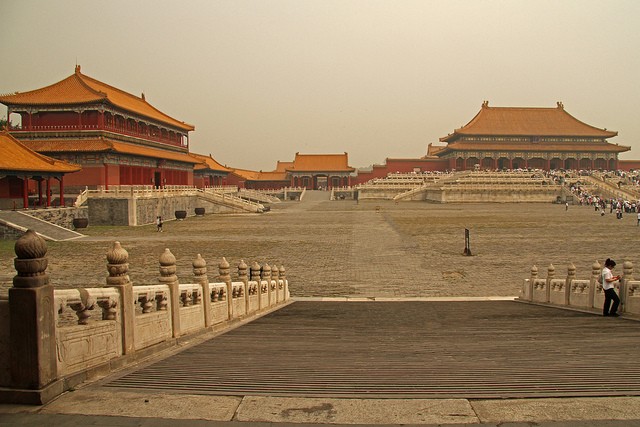A color drawing by the Lei Family, a legendary Chinese architecture family, was unveiled at the National Library of Australia in Canberra, as just one of several pieces of the Celestial Empire: Life in China 1644-1911 exhibition that opened for a media preview on Tuesday, Dec. 8, Xinhua reported.
The color drawing is on a scroll six meters long and 60 centimeters wide. It shows several well-known palaces and buildings that make up the Forbidden City, as well as all the decoration details of a royal wedding.
The drawing is one of the masterpieces of the Lei Family, who was credited for the imperial buildings for over 200 years during the Qing Dynasty (1644-1911).
This marks the first time the scroll has been brought out of China for exhibition. It is part of the Lei Family Archives that have been listed on UNESCO's Memory of the World Register since 2007.
The exhibition also includes 87 items from the National Library of China and 82 items from the National Library of Australia. For three years, the two organizations have been working together in order to stage the exhibition that aims to give Australians a peak at Chinese society during the last imperial dynasty.
Dr. Nathan Wolley, the curator of the exhibition, said that the Australian audience will appreciate the rich variety of imperial and ordinary lives during the last dynasty that laid the groundwork for modern China that is shown at the exhibition.
"The exhibition provides a rare window into nearly 300 years of life at court, in the fields and in the cities of Beijing and Shanghai--the Qing Dynasty," said the Chair of the National Library of Australia Council Ryan Stokes.
The two institutions signed a memorandum of understanding in 2012, wherein both sides wished to further bilateral cooperation, which led to this exhibition.
The two national libraries have had a good working relationship for around 60 years, according to Anne-Marie Schwirlich, the director-general of the National Library of Australia.
The exhibition officially opens to the public on Jan. 2, 2016, and it will run until May 22. It will only be shown at the National Library of Australia in Canberra.



























